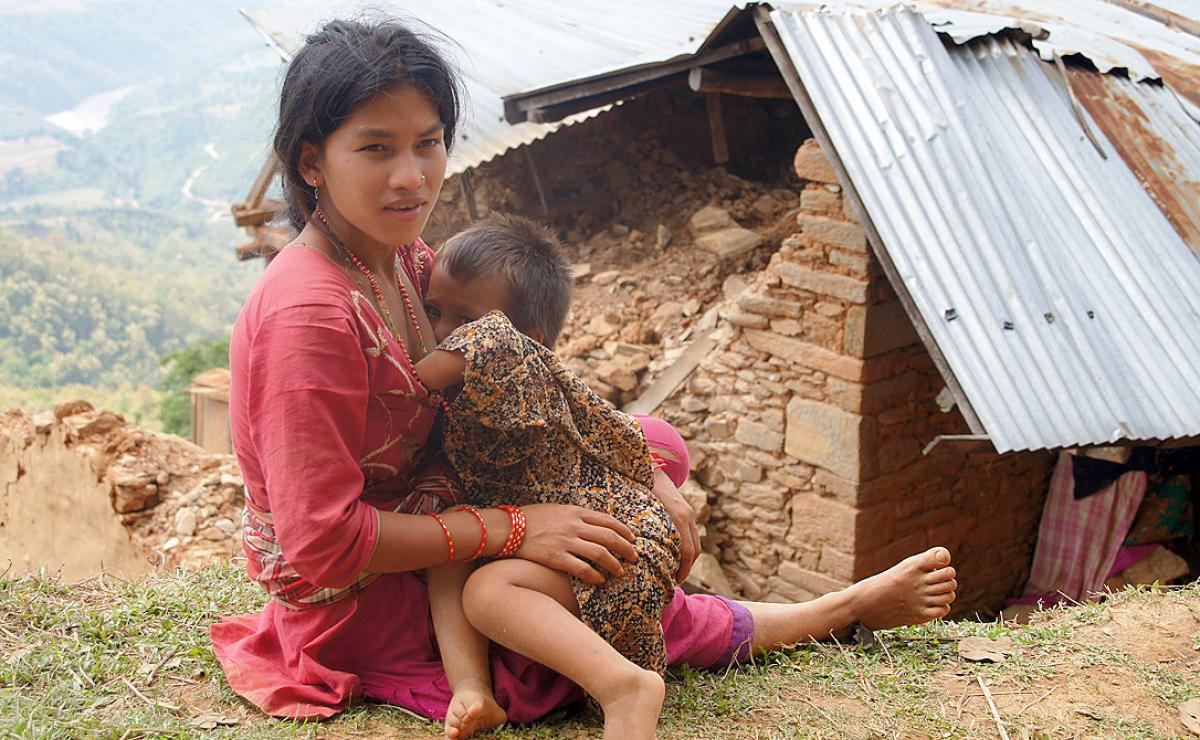Distributions starting in worst affected districts outside Kathmandu Valley

Relief Goods for People in Gorkha, Dahding, Kavrepalanchok and Sindhupalchowk
(LWI) – The Lutheran World Federation (LWF) is extending its emergency aid to earthquake survivors outside Kathmandu valley. After delivering aid to urban and remote rural areas of Kathmandu, Bhaktapur and Lalitpur, distributions will now start in Sindhupalchowk, Gorkha, Lamjung and Dahding districts.
Since disaster struck with an earthquake the magnitude of 7.9 on the Richter scale, Sindhupalchowk has been in the headlines in Nepal. The district suffered the highest number of casualties, surpassing even the badly affected districts in Kathmandu valley. Gorkha, where the epicenter is located, is said to be even more damaged. Many communities are difficult to access because of landslides and poor or damaged roads. Relief goods had to be airlifted and dropped over the affected areas by national and foreign army helicopters.
In Gorkha, the LWF will respond in the area around Barpak, close to the epicenter of the earthquake. Rapid assessment in Jhingate and Chanapani communities carried out last week provided an impression of the response needed. Although located further from the epicenter, more than 80 percent of the houses in these villages have been damaged and many houses have collapsed entirely.
More than 80 percent damage
An assessment team travelled to the affected areas last week to understand what kind of support was needed.
It takes more than half a day to travel from Kathmandu to Jhingate, often on narrow dirt roads. On the way there, the LWF team passes two trucks with relief items which are stuck in the mud. Many communities are not even accessible by road. People walk hours to the few distribution points for a tarpaulin or a mattress, which they then carry back to their homeless families. “Nobody has been here yet to help,” a woman says.
“We were working in the field and had left the small children with their grandmother,” Saida, a young mother, says. “My mother-in-law was cooking lunch when the earthquake started. The children did not know what it was, but they were scared and ran outside.” The elderly woman was not able to get out fast enough. The house collapsed on top of her. “When we found her body, she was still holding the cooking spatula,” Saida adds.
While she speaks, an elderly man climbs the rubble of his house, spreads a scarf in what used to be the yard and performs his prayer. It is Ahlad Bakos, the owner of the house, and husband to the woman who perished. He has tears in his eyes. Ahlad Bakos did not only lose his wife, but also a cow and six goats – everything the family had. His house is the first in a row of buildings which have collapsed into mounts of bricks and wood.
Vulnerable Communities
The most vulnerable have also been most affected by the earthquake. Often it is houses made of cheap mud mortar and located on mountain slopes, which have suffered the worst damage. Two hours’ drive from Saida’s and Ahlad Bakos’ village Jhingate, the community of Chanapani provides a similar picture: The houses further up the hill are standing but damaged, those further down have been reduced to dust. “We had very little, and now what little we had is gone as well,” a village elder says.
Chanapani is a Dalit community. The people who live here belong to the lowest Hindu caste. Although most districts in Nepal have officially abolished the caste system and its inherent discriminations, it unofficially persists especially in remote areas, causing poverty and vulnerability. Many people in Chanapani used to work on a daily basis. After the disastrous earthquake nobody is hiring them anymore, as even well-to-do people have no money to spare. Nobody in the village has relatives employed abroad. Basic sanitation is a challenge: The only toilet is a ten minutes’ walk away. Three to four families huddle under one tarpaulin sheet, the national army provides people with two glasses of beaten rice a day – less than a kilogram.
“We were so lucky to be outside when it happened,” Songam Roka says. “It was lunchtime, so the children were with us. We were able to protect them.” The fact that the earthquake happened on a Saturday afternoon proved to be a lifesaver. Many people were working in the field when their houses collapsed. “We were lucky it wasn’t a school day,” Babu Ram Pande, a local school teacher, says pointing at the badly damaged Shree Saraswati Higher Secondary School in Chanapani. “There wouldn’t have been a way to get the children out of the building fast enough.”
Comprehensive Support
LWF will provide integrated support, meaning it will provide all the relief a village needs. In Gorkha, this will most likely cover a wider range. With the monsoon rains about to start, shelter is the most urgent priority, followed by reconstruction. Since some people’s livelihoods are gone, food assistance will be needed in a few weeks’ time as well. Where toilets and water pipes have been damaged, LWF will provide water, sanitation and hygiene. Psychosocial support will help people deal with the trauma of the earthquake and make sure that vulnerable people are not overlooked.
A first assessment also showed remarkable resilience and coping mechanisms among the rural people. “They are not just waiting for aid to come, they are organizing themselves”, Bed Prakash Bhatta Lulani, member of the LWF assessment team to Gorkha, says. “Neighbors help each other; relatives support those who have lost their homes.” In Chanapani, the community is exploring shared labor as a way of reconstructing the village. Volunteers help people who are too afraid salvage their belongings from damaged houses.
“Everybody is still in shock, nobody has much to spare,” Songam Roka says. “When the children see the wind rustling the leaves, they are afraid because they think it’s another earthquake.”

